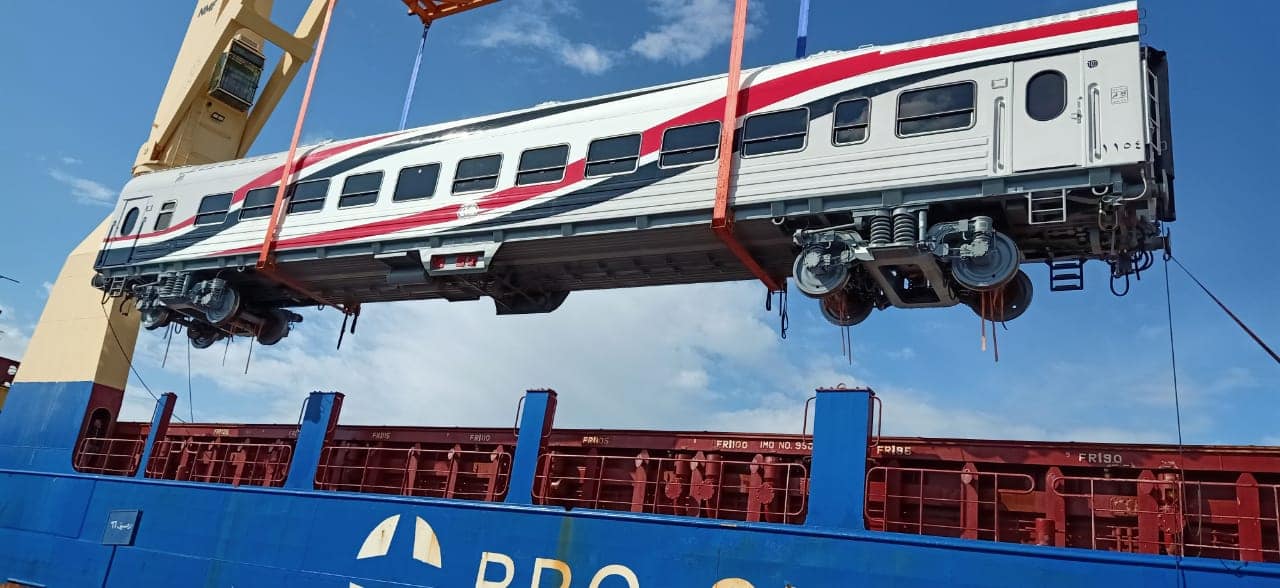
Railway trips each day carry millions of people, who remain unaware of the tireless 24-hour work that goes into managing its advanced technology.
Al-Masry Al-Youm went on a tour at the Russian international company, Transmashholding, for manufacturing railways, subways and trams, and documented the full experience behind-the-scenes.
The company has historical relations with the Egyptian National Railways, through agreements concluded to produce 1,300 train wagons, as well as the establishment of train maintenance workshops in order to localize this industry to serve Egypt and Africa.
Al-Masry Al-Youm met with several officials, engineers and workers, as well as passengers who dream of transportation equipped with aerial Internet networks, alongside placing phone chargers for free between the seat separators and screens to watch their favorite media.
Moscow’s subway marvels
During a tour Al-Masry Al-Youm got acquainted with the most prominent historical subway stations in Moscow, and visited factories and workshops that manufacture trains, subway and tram wagons.
The first subway lines were built in 1935, and are located 70 meters below the surface of the earth. There are a total of 13 stations on the Red Line, including the Lenin Library and Komsomolskaya stations.
The number of current stations is about 400, all of which surround the Russian capital Moscow and neighboring cities.
Russian factories continued to build metro stations until the outbreak of World War II, and then stopped in order to manufacture weapons.
The metro was even used as a shelter from air raids until the war stopped.
Any Russian or foreign resident or visitor can use metro tickets by obtaining a 100-ruble card to move on many lines, in addition to using a special program on smart phones to pay the trip fees.
The Moscow and Komsomolskaya stations are masterpieces of visual design, with mosaic panels inlaid with precious stones. The stations are decorated with paintings and statues of the Soviet era.
What goes into making a train
The Director of Services and Sales at the Mytischi Factory in Moscow, Vladimir Vitushko, explained the stages of assembling in the subway industry.
It starts with the construction of structures and iron panels, and the use of robots in welding joints to assist in the production of vehicles on a monthly basis, as well as in the stages of installing doors and paints, writing numbers on vehicles and installing batteries with large loads and wheels.
According to Vitushko, air-conditioning devices, and mobile phone chargers are installed in each vehicle all the way to the driver’s cabin.
Vitushko stressed that the company aspires for “zero error” in the manufacturing process – even though technology sometimes makes mistakes.
Mytischi officials told Al-Masry Al-Youm that the factory in Moscow was built in 1897, and links 19 cities to the capital of Moscow.
Up to 950 tram vehicles were supplied to St. Petersburg, 60 vehicles to the Azerbaijani capital Baku and 56 others to Uzbekistan, Poland and Bulgaria, according to quality standards, according to Mytischi officials.
The officials also reviewed the history of the production of tram vehicles from 1914 to 1918 to serve hospitals and treatment units, explaining that currently 16 million passengers each day use locally manufactured tram and train vehicles, where 63 percent of workers work in production operations, and 37 percent in the maintenance sector.
They added the metro vehicles run at a speed of no more than 90 kilometers per hour, pointing out that the Moscow metro was awarded the best metro in the world.
Despite sanctions against Russia, the Mytischi officials said that during the past years, exports were being made to Bulgaria and Poland, while Russia also currently exports to Uzbekistan, Azerbaijan and Belarus.
They likened the modern metro to a smartphone, with screens installed in up to 12 languages to clarify and facilitate itineraries for all foreign passengers visiting Russia.
For security purposes, the metro vehicles were equipped with surveillance cameras, some of which are connected to the train commander, and others connected to the security authorities so that these devices can recognize the faces of any criminals.
The train conductor’s cabin displays the number of stations, the speed of the train, indicators for opening and closing doors, and temperatures to adjust the air-conditioning in summer and winter.
Strong ties with Egypt
Russia is greatly cooperating with Egypt on the train industry, said the Chief Executive Officer of Transmashholding, Kirill Valerevich Lipa, adding that the government is eager to develop railways.
He described the relations between both countries as strategic.
In an interview, Lipa told Al-Masry Al-Youm that the company works on local production amid Western sanctions, and relies on itself in the production of technology.
Within seven years, he says that Russia will dispense on working with diesel engines and will shift to natural gas.
Lipa noted that each country has operating conditions and varying weather temperatures, adding that the process of localizing the railway industry in Egypt is ongoing to serve more of Africa.
The railway network in Egypt has a long and grand history, Lipa said, noting that President Abdel Fattah al-Sisi and the Egyptian government are eager on developing this vital and important sector in the country, in order to transport passengers safely and quickly.
Egypt is now focusing on developing the railway network to have wider capabilities, including the maintenance of wagons.
Lipa said that Egypt has agreed to buy about 1,300 railway wagons from the company recently, which is why the Egyptian government has been keen on developing local production and localizing railway industry, as part of an overall plan to serve the African market.
According to Lipa before the end of the year, more than 150 Egyptian engineers will undergo training on railway maintenance.
He assured that the company produces trains that are suitable for Egypt’s hot weather.




